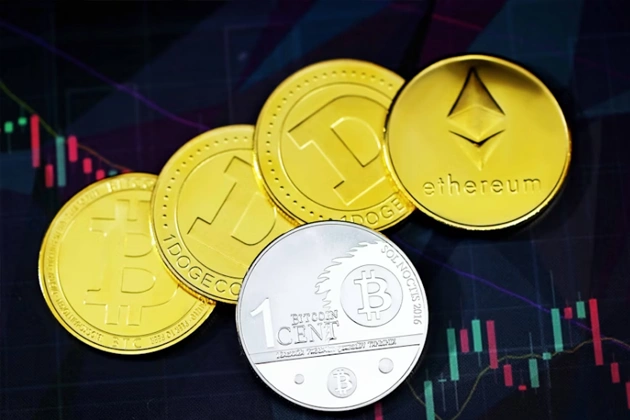Cryptocurrencies are digital assets designed to operate through computer networks without being reliant on central authorities such as banks, other financial institutions, or governments. Stablecoins are the exception to the rule, as they can rely upon government action or legislation to demand that stable value is maintained. Individual ownership records are stored in blockchains, computer databases that utilize consensus mechanisms to secure transaction records, create new coins, and verify transactions. Proof of work and Proof of stake are the most well-known methods.
Despite their name, digital assets are not actually regarded as currencies. Depending on the country or jurisdiction, different classifications have been adopted, describing the holdings as securities or commodities. They are generally viewed as a distinct class as well. The first cryptocurrency to appear on the market was Bitcoin, released as open-source software in 2009. Since then, tens of thousands of cyber assets have appeared, all of them based on the same blueprint. Traders have, as a result, started looking for the best crypto price prediction figures that can help them figure out what strategy they should adopt next in order to ensure the well-being of their portfolios.
The crypto ecosystem is a tight-knit community, so in order to understand what happens with a certain holding, you need to become aware of the larger shifts occurring on the marketplace. And since the environment is so fast-paced and inherently based on innovation, you always have to stay up-to-date with what’s going on to ensure you’re making the best choices.
Image source: https://unsplash.com/photos/gold-round-coins-on-purple-surface-LtaZFutKCl8
Institutional adoption
The crypto ecosystem has been characterized by robust institutional adoption over the last few months, a characteristic many investors have taken as a positive development and proof that the coins are becoming more trustworthy. Fintech companies have begun to build blockchains, and Wall Street is exploring digital assets, leading many to believe that the future of crypto is indeed very bright. However, some researchers have begun to doubt this trend’s ability to endure over the long term, as execution bottlenecks persist. As a result, institutional adoption could still have a long way to go before reaching its full potential.
A financial services app has recently announced the launch of a layer-2 blockchain that would support tokenized stocks and real-world assets alike, while another wants to build a payments-focused chain. And this is only the beginning, as companies across Asia, Latin America, and emerging markets are gearing up to make moves as well. Yet, these new blockchains will face the same old performance issues. Wall Street firms can trade in microseconds, while blockchains still require milliseconds at best in order to process transactions, with full seconds being more common. Some believe there’s a way to solve execution bottlenecks by building modular layers that can be plugged directly into existing blockchains in order to boost throughput without making the projects rebuild the entire stack.
The goal is to bring performance to any and all blockchains in a plug-and-play manner, so that the chains can upgrade the throughput and block execution time without the need to redesign the entire architecture.
ETFs and treasuries
The next wave of institutional adoption will require consistent improvements to the blockchains, but Wall Street didn’t wait for them to join the marketplace. Several large investors have been exposed to the marketplace as a result of the exchange-traded funds. This asset class was officially approved in January 2024 and has been welcomed by investors who saw it as a huge step forward for the marketplace. It was set to incentivize those who wanted to invest but didn’t want to become involved with crypto directly. The predictions were correct, and the ecosystem did in fact receive a boost as a result of the approval.
However, institutional investors should remain careful, as not all BTC corporate strategies have the exact same structure. The price spikes have been compared to token launches that also get initial boosts before climbing down to a fairer value after the momentum has cooled. The demand for ETFs and proxies remains unchanged, though. The majority prefer to accumulate over longer timeframes as it allows them to deal with the market more effectively and derive more value.
Tokenized lending
According to Binance France president David Princay, “Crypto’s now part of your daily commute. In Toulouse, France, you can now pay for all metro and bus tickets with Binance Pay on the public transport network Tisseo.” It’s no secret that cryptocurrencies are becoming increasingly mainstream and are being integrated into traditional financial landscapes in growing numbers. As a result of this shift, some only see it fitting to include new functionality that can allow the crypto ecosystem to keep up with its peers as well. Recently, global investment company Franklin Templeton, Singaporean multinational banking and financial services corporation, and Ripple joined forces to announce the launch of tokenized trading and lending services.
The feature will be exclusively available for institutional investors and built on the XRP Ledger. Tokenized money market funds and stablecoins will power the ledger to allow the processes to be completed. The trio signed a memorandum of understanding that can help investors manage market volatility much more accurately and shift funds between yield-generating assets and stablecoins. Investors require solutions that can meet the unique demands of borderless asset classes, which operate 24/7. With this partnership, the crypto industry demonstrates that tokenized securities can play a significant role in this regard, while simultaneously injecting much better liquidity and efficiency into financial marketplaces worldwide.
Fintech
Fintech companies are steadily becoming the next stage of blockchain commitment that institutions display. Instead of sending users to trading apps, they have chosen to invest in their own blockchains and add digital coins to their own infrastructures. The infrastructure is changing as well, with over-the-counter desks becoming more common. Offering better compliance is the goal here, with reporting standards and settlements being things most investors expect. As such, cryptocurrencies will be brought closer to traditional finance norms.
If you’re an investor and want to make sure your portfolio remains strong, remember to do your research on where the market is headed. So many things are changing in the ecosystem, and the only way to remain successful is to keep up with them. Knowing what’s happening in the ecosystem will allow you to come up with the best strategy for your list of holdings so that your losses don’t end up surpassing your gains.










